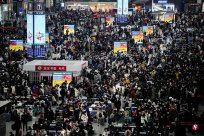The Federal Reserve (FED/Federal Reserve) recently described at the recent meeting is unbelievable. It is believed that even if the unemployment rate has reached a new low in 20 years, the inflation will be controlled in the near future.
At the National Association of Commercial Economics (NABE) held in Boston this week, an economist said that the Federal Reserve's estimate was so incredible.
The starting point of the financial crisis in 2008 was an unexpected panic that the financial industry has not received enough attention. On the occasion of the 10th anniversary of the last crisis, the recent speech and research of Federal Reserve officials emphasized to avoid excessive leverage and the imbalance of the financial market market imbalance.Although it can be understood by this, there may be the risk of ignoring the next recession for inflation out of control.
Robert Gordon, a professor of economy and social sciences in Northwestern University, said that the Fed's indicator of leverage, financial buffer, and other financial market toughness indicators are obviously shifting.
Gordon said at the Nabe conference earlier that the Fed's inflation is incredible that the continuous employment will inevitably push prices, although it is considered that there are not many inflation threats in the short term.
Global trade policy relationships are tight, an emerging market debt crisis, or other forms of shocks, but must be large and lasting to destroy the current growth rate of 3.0%of the US economy.
Few people believe that the US property market is hidden in the same risk as in the early 2000s, and although student loans and other consumer credit have grown, the overall home credit and debt repayment level can still be controlled.Nevertheless, if the Trump administration nominated the former Federal Reserve Financial Stable official Liang Naili as the Federal Reserve, then measures to avoid another financial crisis may be further strengthened.
In the report submitted to Congress, the Fed emphasized concerns about commercial real estate and stock markets, because as interest rates rose, the rise in prices may be reversed rapidly.Before Liang Naili was considered, the Federal Reserve President Powell recently faded the relationship between the setting interest rate and the traditional inflation signal, and pointed out that when the two economic recessions in the past two times, the problems started from the financial market.
Risk management reminds signs of finding problems from inflation, Powell said at the annual meeting of central bank officials in Jackson Hall, Wyoming, at the end of August.However, Powell also said last month that he believes that the risks contained in various economic indicators are not high, including family liabilities and current bank capital.
Boob?
Two months later, the test will be ushered in. At that time, the Federal Reserve ’s director will decide whether to increase the so -called bank inverse cycle capital buffer, which will force banks to allocate more capital defense business periods.The Federal Reserve's director Bre even said that capital buffer should be raised from zero because the US tax reduction policy brought a fiscal stimulus effect last year, and the economic expansion in the past 10 years has made the asset price higher.
The indicators analyzed by Liang Naili, the head of the Federal Reserve Financial Stability Department, have not caused doubts, but her research clearly shows that tools such as inverse cycle buffer may be used to limit the problem of credit growth.
The end of the cycle
Liang Naili is also a senior researcher at the Brucks Society.She pointed out that tightening monetary policy and early intervention is the best way to eliminate potential crisis. Therefore, some people expect that as Federal Reserve, she will pay close attention to a wider financial stability indicator.
Goldman Sachs recently wrote that the further increase in expenditure or stock price brought by tax reduction policy in 2017 may trigger imbalance in the financial market.However, as the unemployment rate drops to 3.9%, the regulatory measures after the crisis have stabilized the banking industry. Many analysts believe that this long economic cycle will end up with the inflation rate as usual as usual and the Federal Reserve ’s interest rate increase.
The Fed is expected to be between 3.5-3.7%by 2021, and the outside world believes that the level of unemployment rate that echoes the inflation rate is about one percentage point higher than this.
I think this will inevitably be accompanied by James Stock, a White House economic adviser at Obama's presidential period and a professor of economics at Harvard University.
Since the end of 2015, the Fed has been raising interest rates slowly to prevent it from being suffering from it, but it is unclear to what impact on the shadow banking industry that has been risky.Enterprises with less supervision provide credit to high -risk enterprises.The Fed warned in July that the lending of high leverage and low -rating companies was still high.
A papers published by the former Federal Reserve President Biranke recently learned at the Brucks Society showing that a lesson in the crisis is that the prediction of the decision maker needs to consider the interaction of the credit market and the economy, which means that the finance stabilizes the financial stabilityAll kinds of doubts are incorporated into the models of different impacts.
When asked about the degree of concerns about the current financial market signal, Rosenger, President of the Boston Federal Reserve Bank, said at the NABE conference on Monday that I don't think it is to be alert to alert.But I do believe that many yellow lights have been on.


